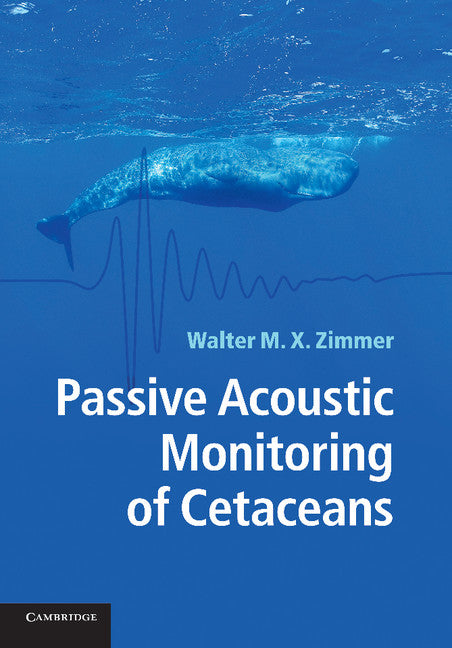Freshly Printed - allow 8 days lead
Couldn't load pickup availability
Passive Acoustic Monitoring of Cetaceans
Provides basic knowledge, datasets and Matlab code allowing readers to study passive acoustic monitoring and to implement their own ideas.
Walter M. X. Zimmer (Author)
9781107428386, Cambridge University Press
Paperback / softback, published 7 August 2014
368 pages
24.4 x 17 x 1.9 cm, 0.59 kg
'This book provides an invaluable, cutting-edge, analytical foundation that will have immediate benefits to those applying passive acoustic tools and analyses in these areas … this hands-on volume is clearly a major contribution to the field and must be regarded as required reading for those using passive listening methods to study these amazing acoustic animals and mitigate the effects of human activities on wild populations.' Brandon L. Southall, The Quarterly Review of Biology
Passive acoustic monitoring is increasingly used by the scientific community to study, survey and census marine mammals, especially cetaceans, many of which are easier to hear than to see. PAM is also used to support efforts to mitigate potential negative effects of human activities such as ship traffic, military and civilian sonar and offshore exploration. Walter Zimmer provides an integrated approach to PAM, combining physical principles, discussion of technical tools and application-oriented concepts of operations. Additionally, relevant information and tools necessary to assess existing and future PAM systems are presented, with Matlab code used to generate figures and results so readers can reproduce data and modify code to analyse the impact of changes. This allows the principles to be studied whilst discovering potential difficulties and side effects. Aimed at graduate students and researchers, the book provides all information and tools necessary to gain a comprehensive understanding of this interdisciplinary subject.
Acknowledgements
Introduction
Part I. Underwater Acoustics (The Basics): 1. Principles of underwater sound
2. Cetacean sounds
3. Sonar equation
Part II. Signal Processing (Designing the Tools): 4. Detection methods
5. Classification methods
6. Localisation and tracking
Part III. Passive Acoustic Monitoring (Putting It All Together): 7. Applications of PAM
8. Detection functions
9. Simulating sampling strategies
10. PAM systems
11. References and literature
Index.
Subject Areas: Marine biology [PSPM], Biology, life sciences [PS]


